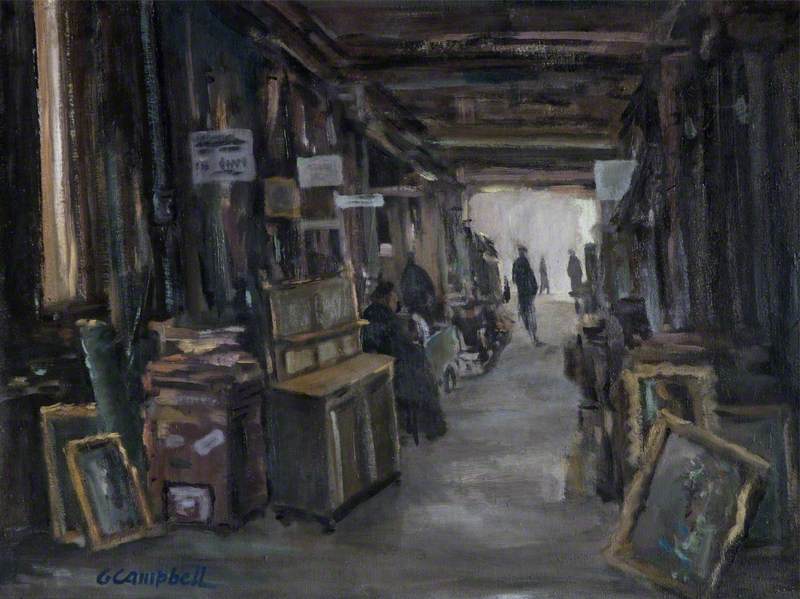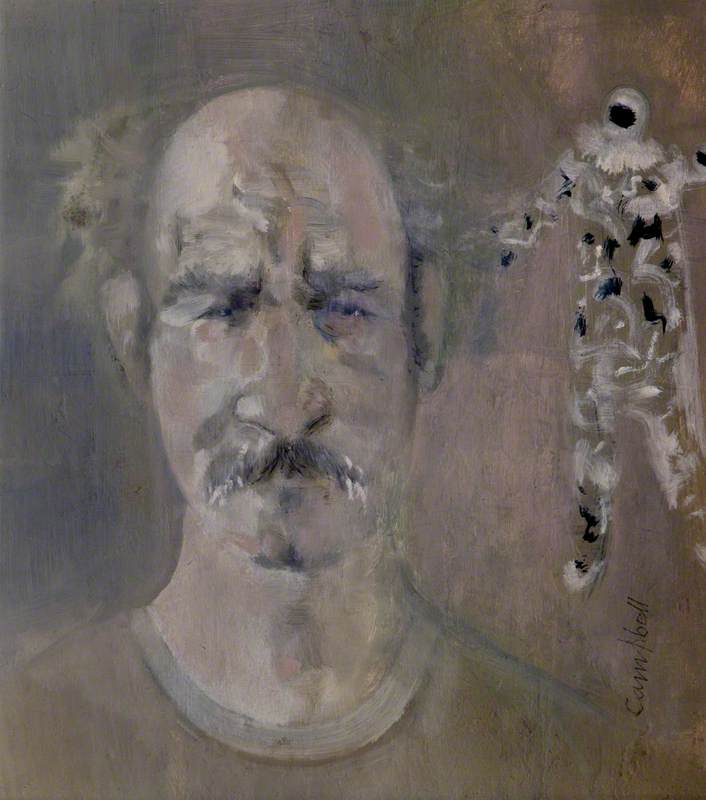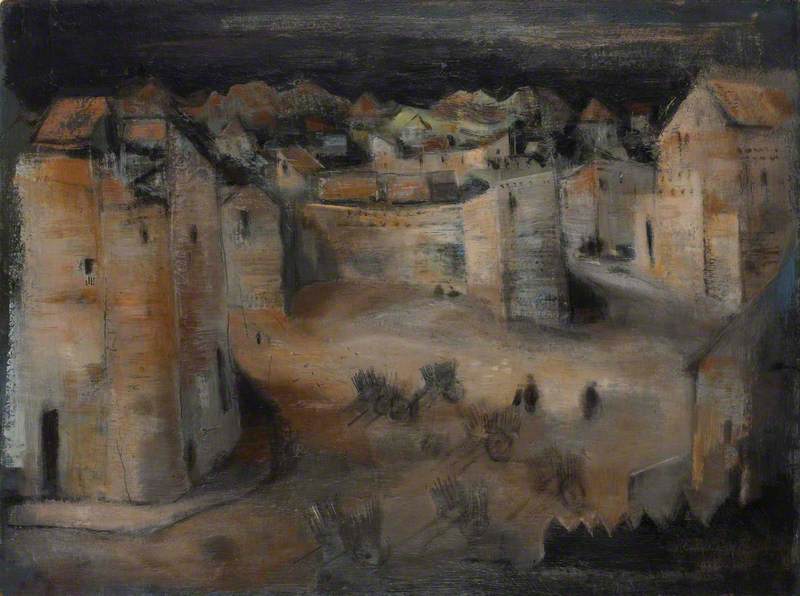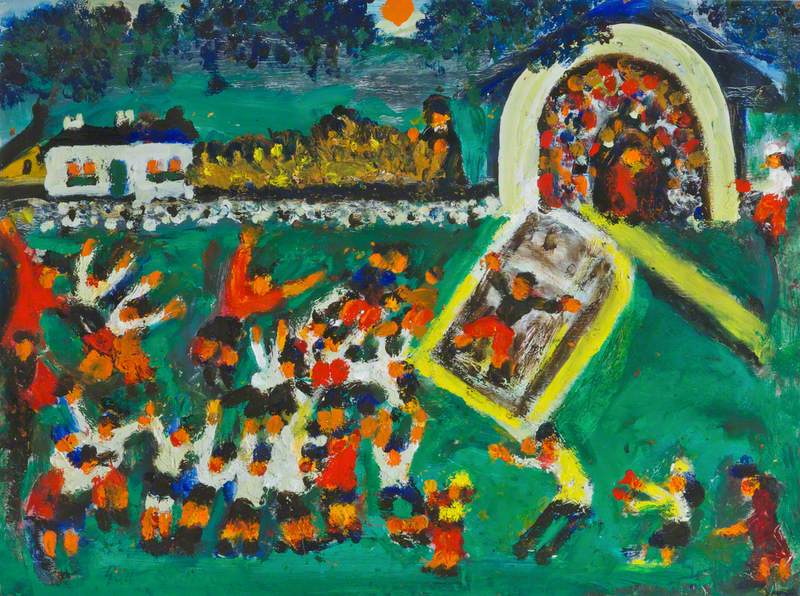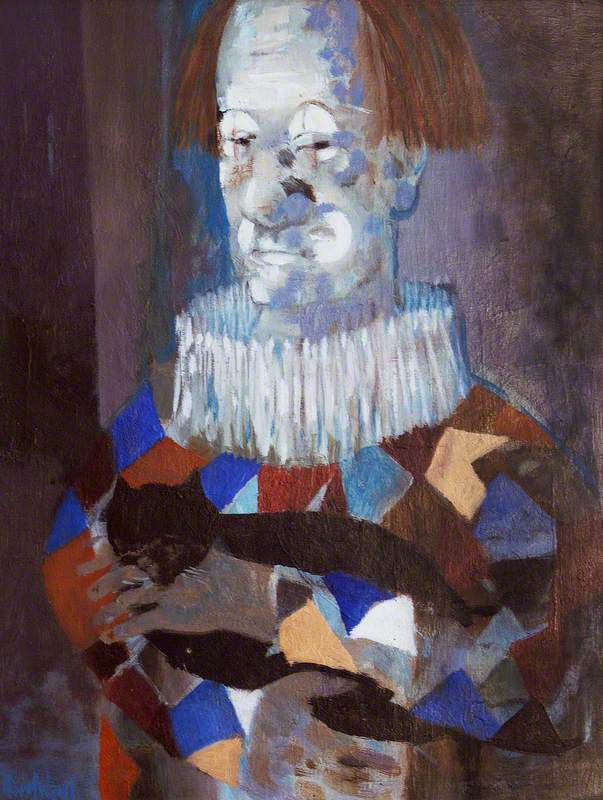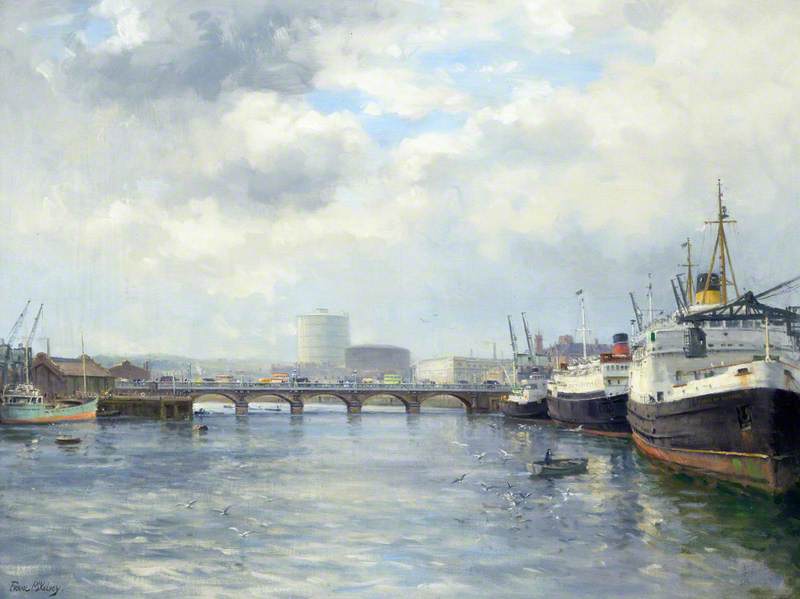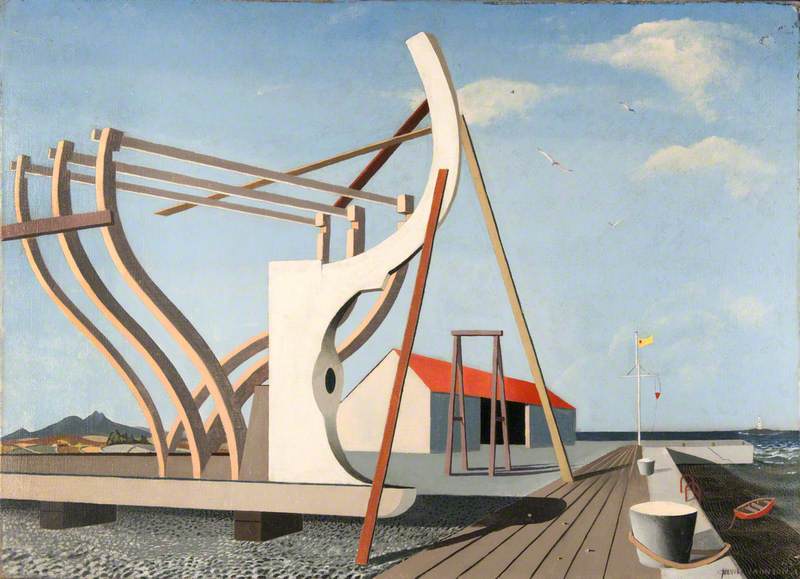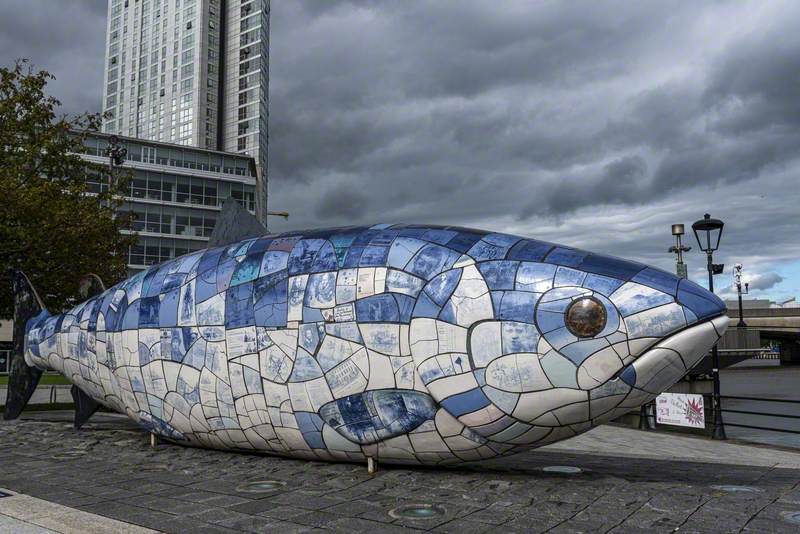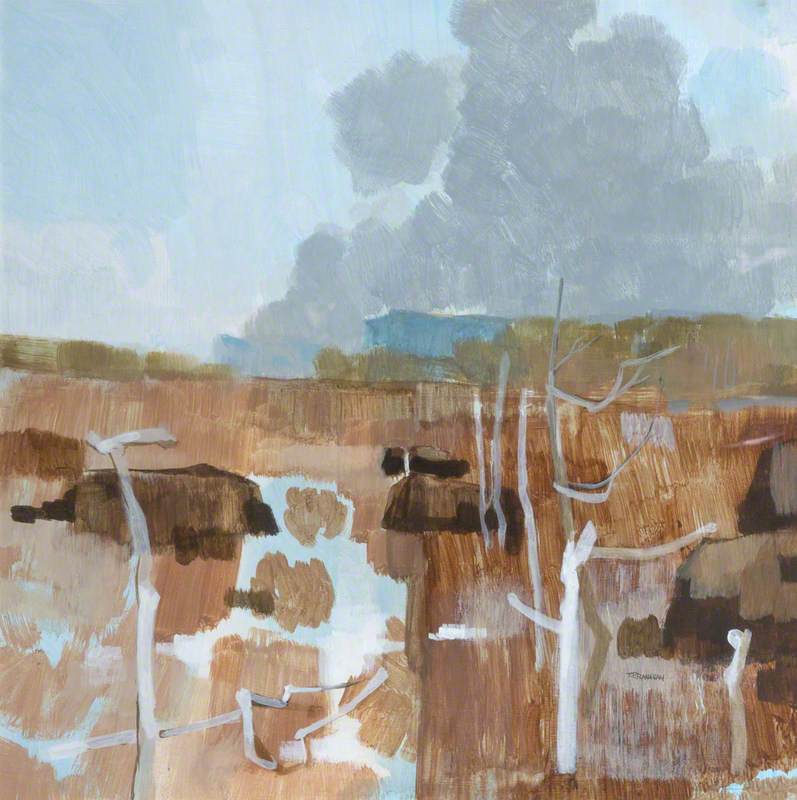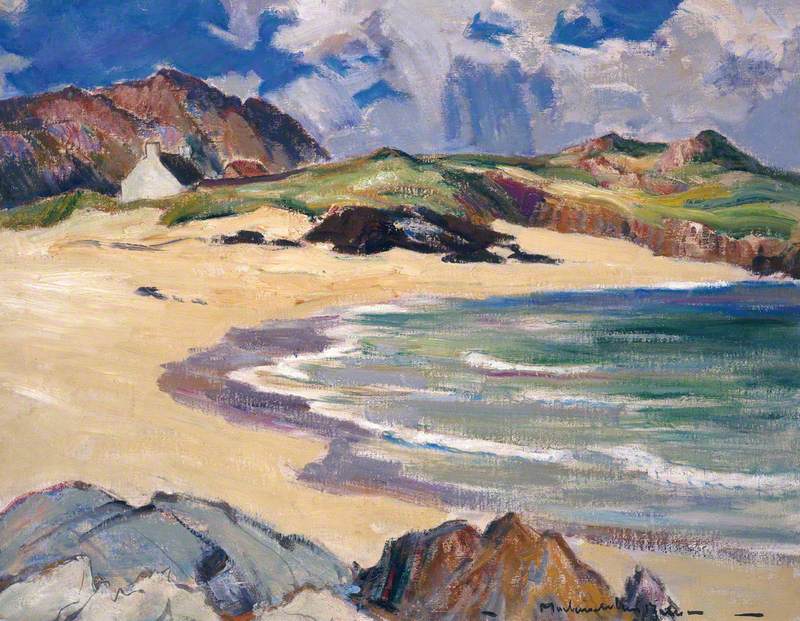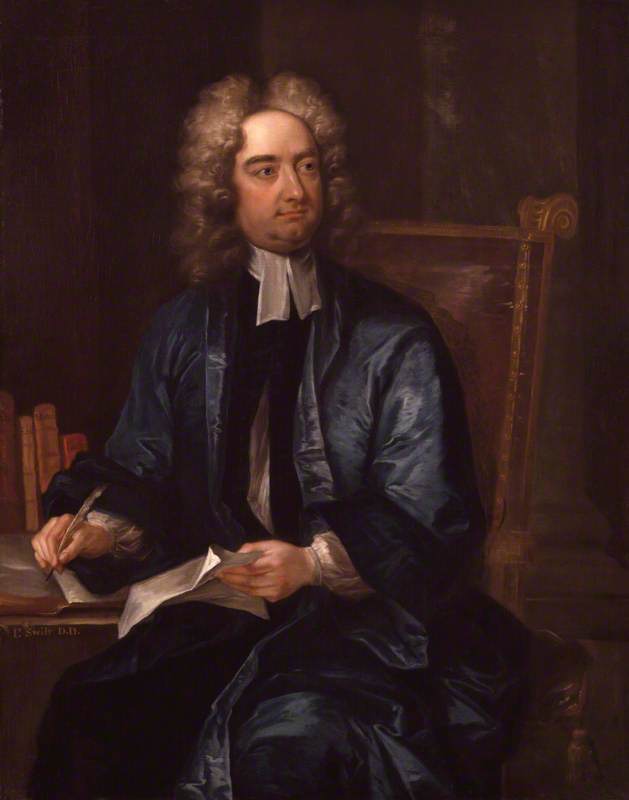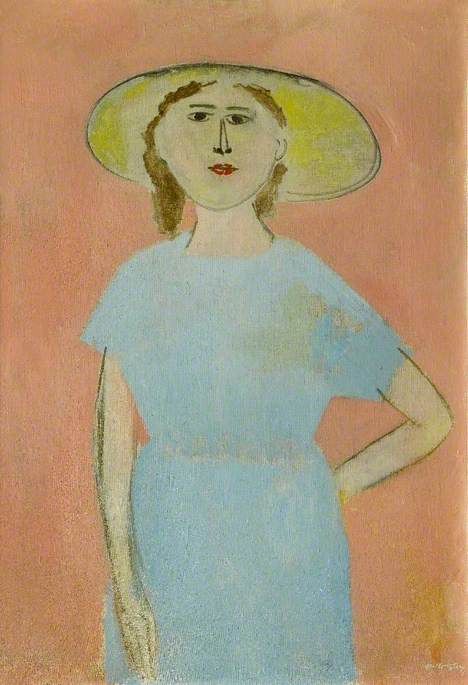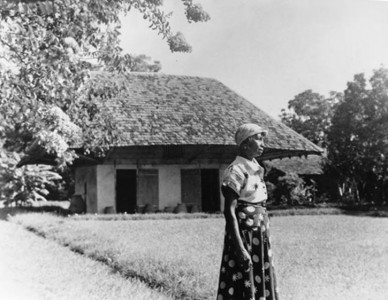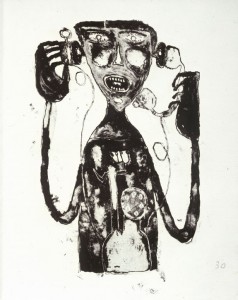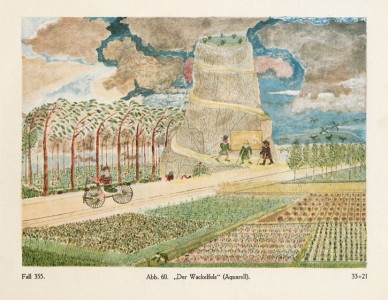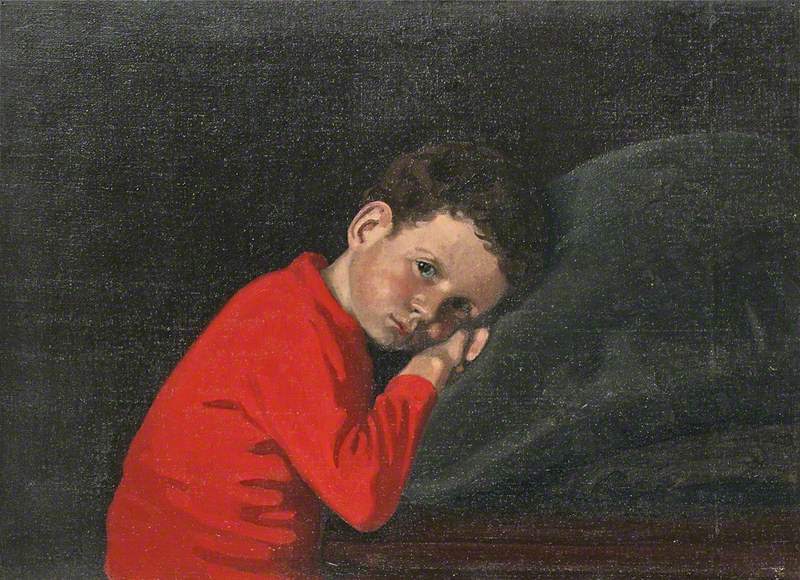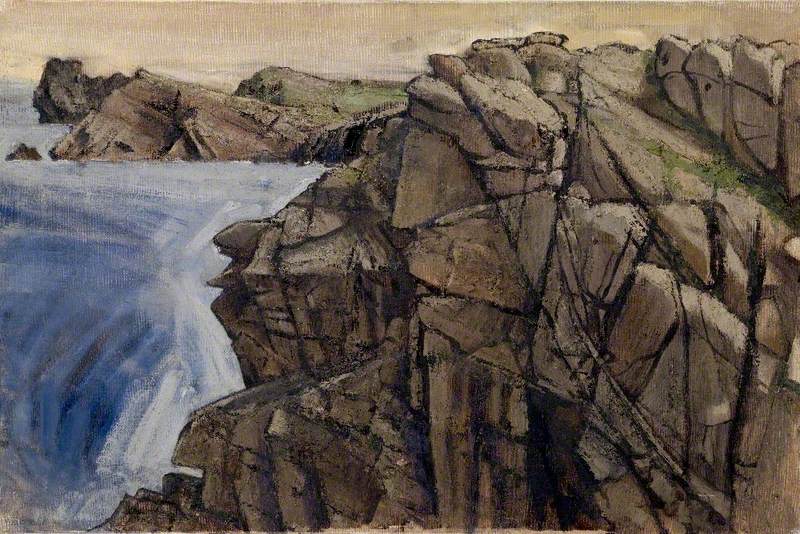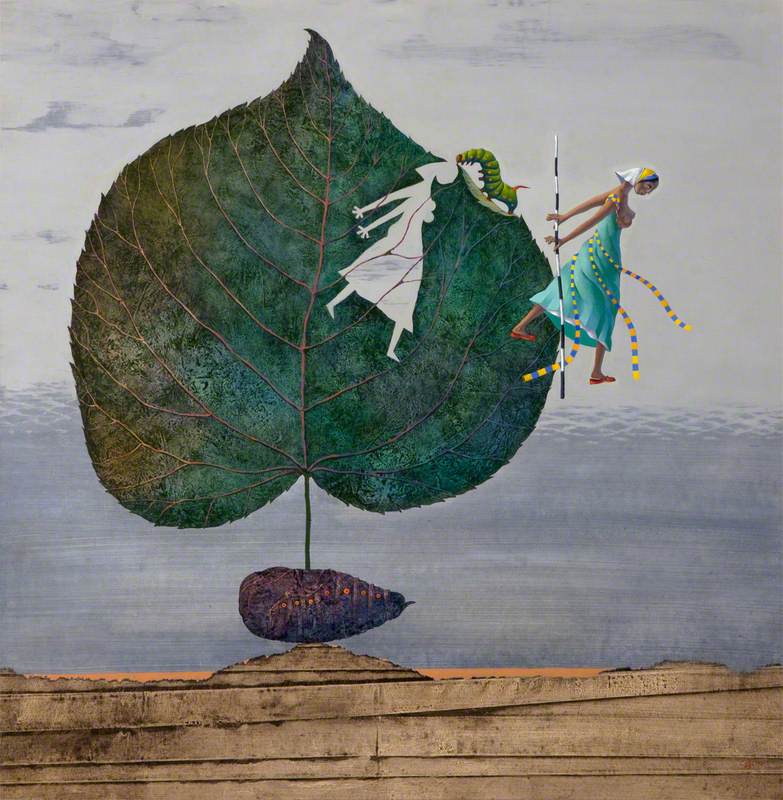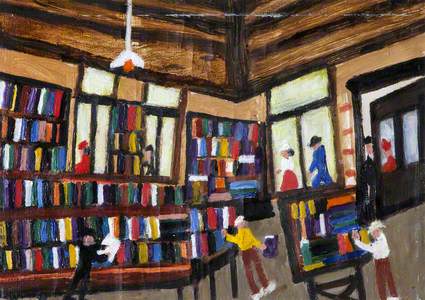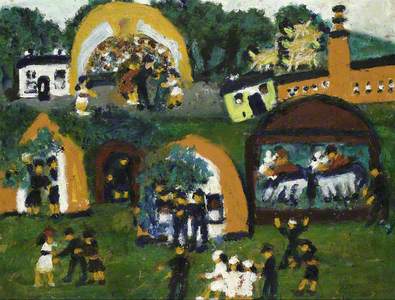In the early 1940s, brothers George and Arthur Campbell were two of the most prominent young artists working in Belfast. Arthur was nine years older than George, who was born in 1917 in Co. Wicklow; another brother, Stanley, was born between them. In 1921 the Campbell family moved to Belfast, where their mother Gretta was abruptly widowed four years later.
Arthur attended night classes at Belfast College of Art, but both brothers were largely self-taught. Although he painted throughout his life, predominantly in watercolour, Arthur's central passion appears to have been photography, a selection of which was subsequently published in two books.
These images concentrate on Dublin and Belfast during the wartime and post-war years and document the reconstruction of Belfast after the Blitz. In 1989 he recalled, 'When news of the start of war broke I went down to a photographic shop in High Street and bought all the 3 x 4 centimetre film that was in stock'.
It appears to have been around the time of the Blitz, in 1941, that George Campbell began to work as a painter – clearly affected, like his brother, by the bombing and the destruction it caused.
This is reflected in the mood and subject matter of his early painting, which was noted at the time for its 'social conscience'. Rather than studying at the College of Art, he decided to learn by working alongside some of the younger painters in Belfast who were also largely untrained and with whom he clearly felt some kinship, such as Gerard Dillon, who remained a close friend, and Daniel O'Neill.
The Campbell brothers worked closely together in Belfast during the war – jointly producing two booklets illustrating work by their contemporaries, Now in Ulster and Ulster in Black and White, and taking part in group exhibitions – but Arthur balanced a career as a designer and illustrator alongside painting and his photographic work. In some ways, his photography might be seen in parallel to Nevill Johnson's photographic record of Dublin carried out in 1952–1953, both revealing cities at moments of social, physical and architectural transformation.
Originally exhibiting in various group exhibitions and small galleries around Northern Ireland, Campbell, O'Neill and Dillon were soon taken on by the Dublin dealer Victor Waddington and formed the original core of the group of Northern Irish artists whom he was to exhibit regularly in Ireland and beyond, until the mid-1950s when he moved his gallery to London.
It appears to have been around 1949 that another artist was added to the Campbell family. Born in 1880, Gretta Bowen seems to have started painting almost accidentally, trying out materials left in her house by her son, Arthur. According to George Campbell, at first she denied that she had painted the first works he saw, but then acknowledged them when his enthusiasm became clear. Her naïve manner of working reflects the innocence and nostalgia of her subject matter, as well as the pleasure she took in exploring these memories in pigment applied directly and without any preparatory drawing.
Within a short period Gretta Bowen, exhibiting under her maiden name, had been included in a group exhibition, 'Contemporary Irish Art', held at the Waddington Galleries in 1953. This was despite the fact that her work was unlike the more sophisticated, predominantly modernist painters and sculptors with which Victor Waddington had become identified in the post-war period, such as Nevill Johnson, Hilary Heron, Colin Middleton and Thurloe Conolly. Despite a number of artists without any formal training having risen to prominence around this period, Ireland did not have a tradition of naïve or primitive artists at this time.
Two paintings that probably date from the early 1950s are in the collection of National Museums NI, and already demonstrate certain consistencies within her style. Figures, mostly of children, are disproportionately small compared to their surroundings. They are defined by colour rather than by any notable difference in pose or activity, or in anything particularly expressive. The figures almost seem to be lost against their surroundings, overwhelmed by their settings.
In A Night at Home, the contrasting patterns of the wallpaper and the carpet, balanced by the more rigid shapes of furniture, pictures and mirrors, push the three seated figures to the edges of the composition. Figures, defined as children or adults, have a stronger presence in The Library, but the repeated colourful verticals of books on cases and the heavy horizontals of the ceiling and doorway still seem to be the more memorable aspects of the room recalled by the elderly artist.
A successful solo exhibition soon followed with Waddington, and in 1955 Bowen also held an exhibition at the Belfast gallery of CEMA (the Council for the Encouragement of Music and the Arts, the forerunner of the Arts Council), which had recently held significant retrospective loan exhibitions of Daniel O'Neill and Colin Middleton, and where both her artist sons had exhibited in the early 1950s. Her exhibition was reviewed by The Times (29th December 1955), which commented that 'whatever she paints conveys a feeling of happiness, of brightness, of delight in life', and referred to Bowen as an 'Irish Grandma Moses'.
Gretta Bowen continued to exhibit regularly and in prestigious environments, with the Hendriks Gallery in Dublin, the Bell Gallery in Belfast, and the Tom Caldwell Gallery, with whom she held several solo exhibitions in Belfast and Dublin, concluding with a centenary exhibition in 1980. In the previous year, Bowen had been included in an exhibition of naïve art in London, bringing international recognition for her painting.
By the 1950s, George Campbell had begun to spend significant periods of time in Spain, developing an interest in flamenco and eventually becoming a good flamenco guitarist. Spain, and its music and culture, increasingly provided subject matter for his art, and his application of a more abstracted and patterned manner of working seems to have been derived from Cubism.
Campbell exhibited regularly throughout the 1960s, 1970s and 1980s at the exhibitions of the Royal Hibernian Academy, the Oireachtas and the Irish Exhibition of Living Art, where his mother also occasionally showed work. Arthur also showed with the Royal Hibernian Academy and was appointed an associate of the Royal Ulster Academy in 1986.
It is remarkable how much the careers of the three continued in some aspects to run in parallel, despite the different levels of recognition they achieved. Arthur's career as a commercial designer, including a long period employed by Harry Ferguson (Motors) Ltd, certainly seems to have curtailed his work as an artist to some degree and he remains the least well-known of the three, despite the publication of two books of his photographs.
Gretta Bowen's work continued to capture the world of her memories, with paintings typically having the strong narrative drive of an event recollected and often with a number of focal points across the composition.
After many years during which Spain and the west of Ireland dominated George Campbell's work, the events of the Troubles seem to have reawakened the same social awareness that had initially drawn him to paint after the Blitz, and he made a number of works whose imagery was drawn from streets full of burnt-out vehicles, police and soldiers.
George Campbell died in 1979, two years before his mother, and his reputation has remained strong both in Ireland, where he is well-represented in public collections, and also in Malaga, where in 2006 the city council named a roundabout after him: the Glorieta Jorge Campbell.
Dickon Hall, Commissioning Editor: Northern Ireland
This article was supported by the Esme Mitchell Trust
